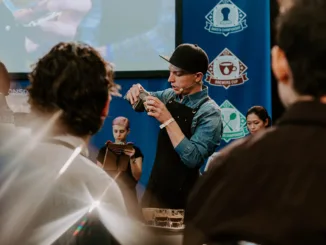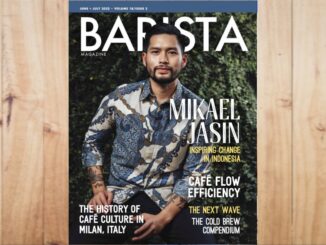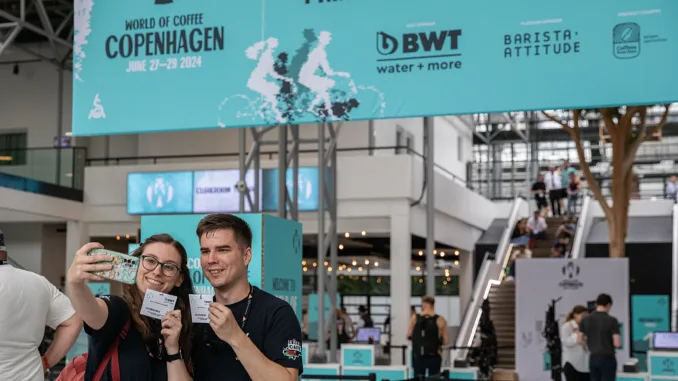
The World of Coffee Copenhagen event was more than just a trade show; it was a hub of relationships, innovation, and trendsetting.
BY ISABELLE MANI
SPECIAL TO BARISTA MAGAZINE ONLINE
Featured photo courtesy of Specialty Coffee Association
The 2024 edition of World of Coffee (WoC) drew a record-breaking 12,600+ attendees from 140 countries to the Bella Center Copenhagen in Denmark, marking the largest and most diverse attendance in its history, with a 26% increase compared to the previous year.
Amidst the excitement of discovering new products, social gatherings, and tasting some of the world’s finest coffees, an essential aspect of WoC is opening opportunities and raising discussions about inclusivity, sustainability, and presenting tools for growth and inclusion.
In 2024, World of Coffee inaugurated two new platforms for learning, networking, and information exchange in Europe: the Retail Buyers Lounge and Green Coffee Connect, aimed at fostering knowledge and educational exchange for the industry’s holistic growth.
In the second part of our World of Coffee recap, which started with “5 Cool Things We Saw at World of Coffee Copenhagen,“ we’ll review what caught our attention regarding science, innovation, education, and empowerment and sustainability initiatives.
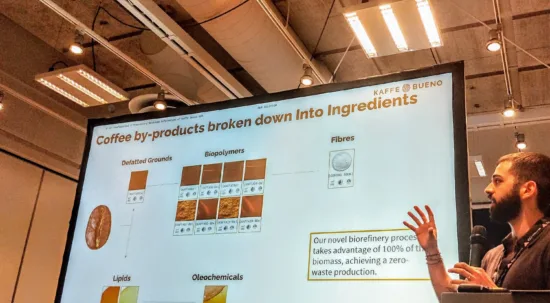
1. Upcycling and Sustainable Innovation
At the event, many panels and lectures focused on the innovative use of upcycled coffee byproducts to promote environmental sustainability within the coffee industry. This topic drew a lot of attention from attendees and is one that I am hugely interested in and constantly learning more about.
Once considered waste, coffee-derived biomaterials offer numerous benefits and viable approaches across various industries. They can replace traditional, less sustainable ingredients that hold potential in food, pharmaceuticals, and cosmetics, offering natural alternatives to synthetic ingredients. For example, these materials can contribute to zero waste discharge and self-sustainable fertilizer production, cutting costs for farmers.
Two standout sessions were “Circular Meta-Experience and Conversation: Tasting and Sensory Experience of Upcycling Products Made of Coffee,“ and “Circular Economy: (Re)Generating Value Throughout the Coffee Value Circle.“ Both panels, supported by the International Trade Centre’s Center for Circular Economy in Coffee (C4CEC), were packed, with attendees eager to engage with speakers and panelists for deeper insights.
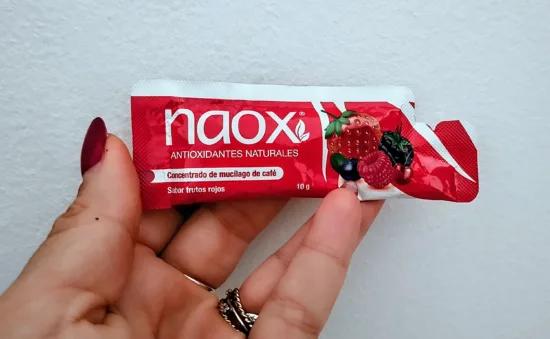
2. A New Upcycled Product
In the first part of this recap, I named my favorite gadgets, innovations, and products. However, the product that impressed me the most isn’t related to barista trends or home brewing tools. Naox is a ready-to-drink health beverage sachet with antioxidant properties made entirely from coffee mucilage. It’s nutrient-rich and contains five times more antioxidants than green tea.
Produced in Costa Rica by Coopeagri, a participant in the C4CEC, Naox was introduced during one the aforementioned lecture “Circular Economy: (Re)Generating Value Throughout the Coffee Value Circle.“
What I love most about this product is that it highlights the nutritional potential of coffee beyond the beans. It exemplifies how the circular economy model can drive innovation by utilizing agricultural byproducts, thus creating economic opportunities for small and medium enterprises in coffee-producing regions.
It tastes good and makes you feel good; I had to hide the extra sachet I was gifted because all my friends wanted to try it! Successful cases like the Noax health drink showcase how upcycling can provide real solutions for regulating environmental impact and combating climate change—and shout-out to Toddy’s coffee-flavored chapsticks, also produced with coffee byproducts, gifted in their WoC booth.
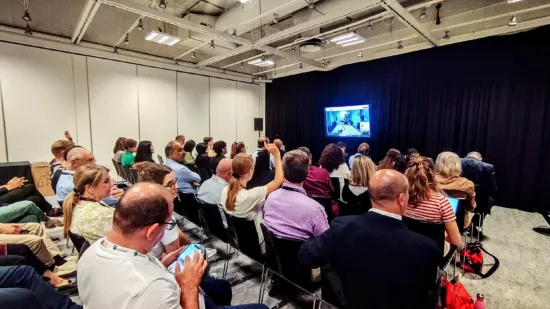
3. The EUDR Regulations
The European Union Deforestation Regulation Coffee Update Webinar (“EUDR Coffee Update: News, Information, and Discussion with the EU“) was probably the best-attended panel I’ve been to during World of Coffee—and the one with the most questions after it wrapped. There was nervous tension in the room. Many questions involved the challenges in gathering required data and confusion about who is responsible for meeting the rules to comply with the EUDR. The regulation is slated to start in 2025, and bans products linked to deforestation unless there is proof they come from sustainable sources.
Concerns have been raised about the potential restrictions on market access for small farmers. The main issues for attendees were: who would bear the costs, how farmers would be trained, and how access to the necessary technology would be provided. The information system will be available starting December 2, with training beginning in September—a tight timeline to which farmers and other stakeholders must adapt.
Many of the attendees I spoke to told me they left the webinar with unanswered questions and unclear next steps.
You can read more about the EUDR and its implications for the coffee industry here.
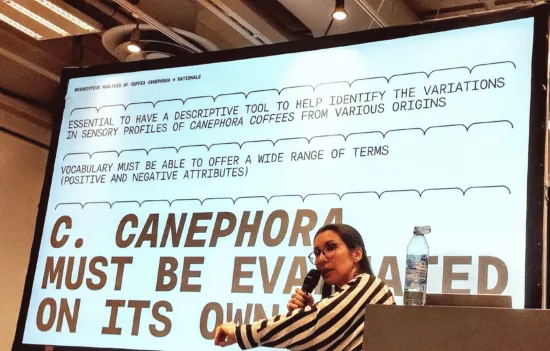
4. The Canephora Moment
The panel “Building Markets for Specialty Canephora,“ presented by Nick Mabey from Assembly Coffee and Volcano Coffee Works, and Dr. Fabiana Carvalho, a neuroscientist Ph.D. and researcher at the University of Campinas, Brazil, was one of the most anticipated for me. I’ve been closely following the work of a collective of scientists, producers, and roasters who are committed to developing and investing in Canephora (robusta) quality and disseminating its potential in the specialty-coffee market. “Comparing (Canephora) directly to arabica is like comparing red and white wine—it’s not an apples-to-apples comparison,” said Fabiana.
During the panel, Nick and Fabiana (who leads a scientific research project on the building of the Canephora Flavor Wheel) discussed the importance of building markets for broader Canephora acceptance; one of its benefits would be supplementing specialty consumption in the face of climate change. Producing countries recognize the need and benefits, but markets must follow, explained the speakers. They advocated that quality perception and supply chain sustainability initiatives are key to opening markets for wider consumption.
The Coffee Quality Institute stand also offered a Canephora tasting every day, promoted by the organizers of Canephorum, an event centered on unveiling robusta’s specialty coffee potential through lectures, workshops, and cuppings. The third edition will take place in Berlin on October 18-19.
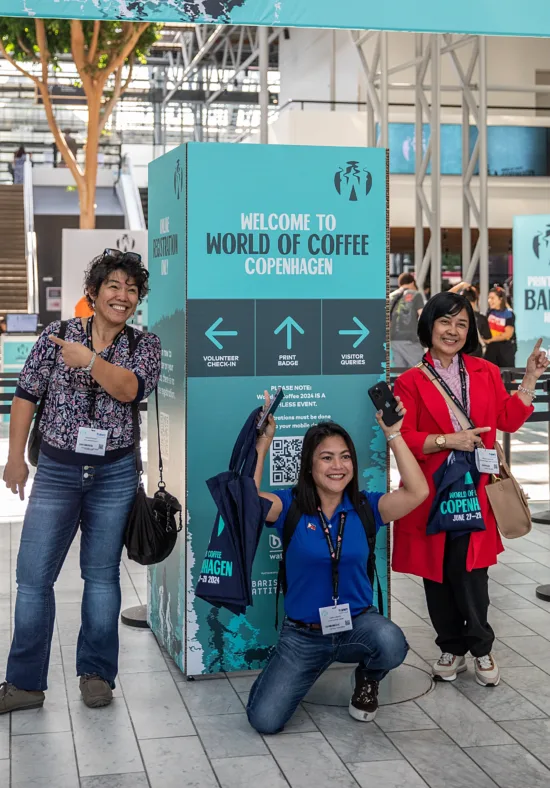
5. Women in Coffee: An Essential Topic
The power and significance of increasing women’s representation in the coffee industry is a topic that cannot be stressed enough. Many female speakers and professionals participated in panels, lectures, workshops, and cuppings. It was inspiring to see women worldwide working to amplify other women’s voices, livelihoods, and recognition.
A significant highlight of the show was the formation of #IWCAGreece, with the nation officially becoming the 35th member of the International Women’s Coffee Alliance’s global network.
Regarding the exhibitors at the Roaster Village, the Miss Moka initiative from the Italian roasters at the TrisCoffee booth also caught my attention. This initiative exclusively sources coffee from women producers in Brazil in partnership with Flavia Lacerda from Arara Coffees.
Flavia explained that her company primarily focuses on working with and promoting women producers from native populations and Afro-Brazilian roots. Additionally, the company sponsors the IWCA chapter in the Sul de Minas D.O. region of Brazil with one of its coffee blends.
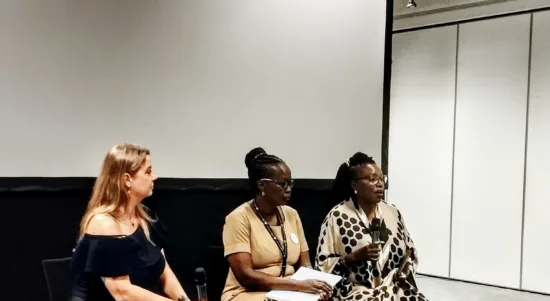
Many panels focused on women’s positioning in the coffee production chain and showcased inclusion initiatives, but the centerpiece that exemplified this movement of unity and mutual recognition between women was the panel “No Sustainability Without Gender Equity: Examples from Kenya’s Coffee Sector.“ Based on Dr. Erika Koss’ Ph.D. research on Kenya, the lecture featured Dr. Rosebella Langat of Chepsangor Hills Coffee and Gloria Wamalwa Gummerus of Sakami Coffee, both owners and directors of coffee estates.
They shared their experiences as farmers and leaders of sustainable businesses that employ and train hundreds of rural women and emphasized sustainability in specialty coffee, which will only be achieved if gender equity is realized.
“Women should band together … I would be more than happy to give up my spot at an event like WoC to one of the women working on my estate so she can have a voice and understand the importance of her work,“ said Dr. Rosebella Langat.
ABOUT THE AUTHOR
Isabelle Mani (she/her) is a writer, journalist, and communicator specializing in the international coffee industry. Since 2017, she has focused on writing articles and features for various international coffee news outlets. Isabelle has traveled to coffee-producing countries such as Colombia, Kenya, Rwanda, China, and Brazil to study and research coffee. She holds training certifications from the Specialty Coffee Association (SCA) and the Coffee Quality Institute (Arabica Q Grading).
Subscribe and More!
Out now: It’s the June + July 2024 issue of Barista Magazine! Read it for free with our digital edition. And for more than three years’ worth of issues, visit our digital edition archives here.
You can order a hard copy of the magazine through our online store here, or start a subscription for one year or two.




